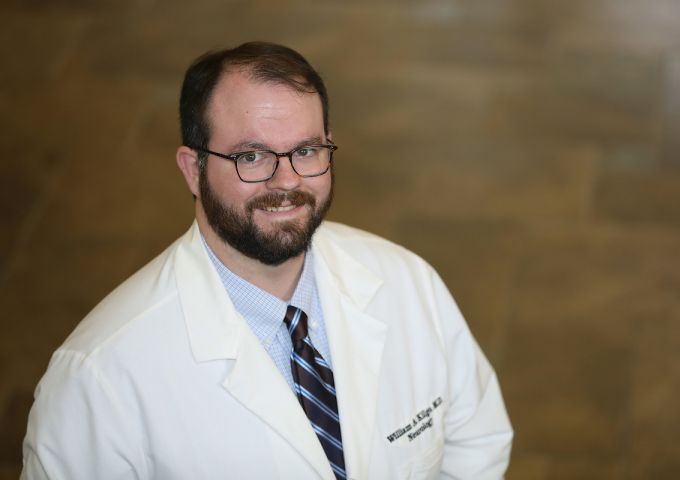
Melanoma journey: ‘I’m working every day to be a survivor’
The Hope Cup golf tournament, to be held May 27, benefits the Melanoma and Skin Cancer Endowment at the Mitchell Cancer Institute.
By Carol McPhail
[email protected]
Kim Nowell of Mobile noticed an unusual spot on her shoulder in 2018 and decided to see a dermatologist.
“It was funny looking. I knew it wasn’t right,” said Nowell, 60, a native of Nova Scotia who moved to Mobile in 2006. “It looked like a raspberry. I have freckles, but I don’t usually have spots like that.”
After an initial biopsy, Nowell visited a surgeon, who removed the spot and referred her to Spencer Liles, M.D., a board-certified surgical oncologist at the USA Health Mitchell Cancer Institute. The diagnosis was melanoma, an uncommon skin cancer that is more likely than other skin cancers to grow and spread.
“It was a scary time for me,” recalled Nowell, who always had loved being outdoors, whether riding on her husband’s motorcycle or sunbathing. While harmful ultraviolet rays from the sun as well as tanning beds and sun lamps are the chief risk factors for skin cancer, anyone can develop melanoma, even on obscure parts of the body such as under a fingernail or on the palm of a hand.
An estimated 106,110 new cases of melanoma are expected to be diagnosed in the United States by the end of 2021 – about 62,260 in men and 43,850 in women, reports the American Cancer Society. Melanoma is more deadly than other skin cancers; although it accounts for only 1 percent of all skin cancers, it is responsible for a majority of skin cancer deaths.
Nowell’s melanoma initially was limited to the surrounding tissue, and her lymph nodes were clear. But in 2020, scans showed that the cancer had spread to other sites in her body. “Now I’m receiving two kinds of immunotherapy,” she said. “They help boost my immune system to find the cancer and get rid of it.”
Over the past decade, new therapies have proved to be game changing for the treatment of melanoma. Once, surgery to try to limit the spread was the only option, but now immunotherapy and targeted therapies are improving survival for many patients. Between 2009 and 2019, five-year survival for patients with stage IV melanoma increased from 5 percent to 55 percent.
“While early diagnosis is still the best way to prevent aggressive, late-stage melanoma, the development of systemic therapies that target the specific cellular mechanisms of this cancer have completely revolutionized our ability to help patients with stage III and IV melanoma,” Liles said. “As our systemic therapies have improved, the role and timing of surgical intervention has become more complex and patient-specific. It is very important for a patient with melanoma to be treated by a team of physicians who understand these case-specific nuances.”
Motivated by cancer journeys like Nowell’s, the Mitchell Cancer Institute created the Melanoma and Skin Cancer Endowment to support treatment and research on skin cancer. During May, which is Skin Cancer Awareness Month, the MCI raises funds and awareness with the Hope Cup Golf Tournament,
presented by Springhill Toyota. This year, the tournament will be held on Thursday, May 27, at the Country Club of Mobile.
Nowell has received six months of immunotherapy with excellent response on her recent scans. “As our therapies have improved, now it is no longer as easy as surgery first, then systemic therapy. Every patient has a unique case.” Liles said. “For Kim, after her cancer returned, we chose to do surgery first to improve her quality of life and then start immunotherapy. I truly believe that she benefited from being treated by a multidisciplinary team experienced in and focused on melanoma.”
Nowell said she is feeling well enough to enjoy activities such as crafting, making seasonal wreaths and decorations and baking. “I also love going to antique motorcycle swap meetings with my husband,” she said.
She also is careful to stay out of the sun and take precautions when she does go out. “My message is that you need to use sunscreen,” she said. “Watch how long you’re in the sun when it is at its peak.”
Physicians recommend that people protect themselves from harmful UV rays by wearing sunscreen and covering with clothing, hats and sunglasses. In addition, avoid tanning beds and sun lamps, and stay out of the sun during the peak hours of 10 a.m. through 2 p.m.
“I’m not as scared as I was two years ago,” she said. “I’m working every day to be a survivor.”
For more information about the Hope Cup, visit usahealthsystem.com/hope-cup.




